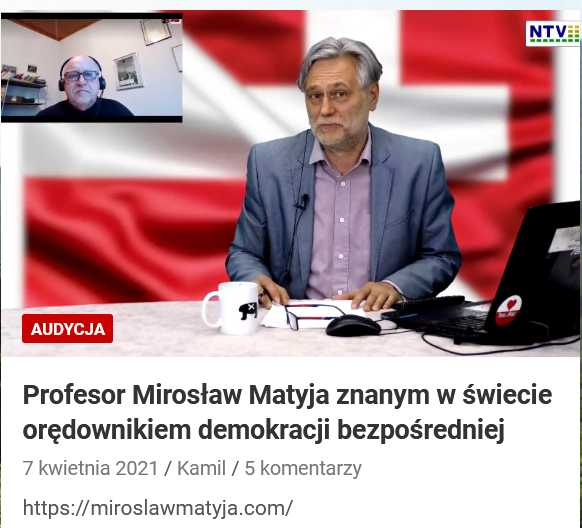Analysis of Contact System for Organic and Inorganic Pesticide Residues on Cayenne Pepper (Capsicum annuum)
Abstract
The aim of this study is to find out Contact System for Organic and Inorganic Pesticide Residues on Cayenne Pepper. This study used the Factorial Completely Randomized Design (CRD) method with 2 treatment factors. The results of the research on cayenne pepper resulted from the interaction of 0.5 ml / l water (K1) of inorganic pesticides with various levels of organic pesticides having a capsaicin level range between 0.078% to 0.080%. Where the lowest percentage of capsaicin levels was obtained at the interaction with Organic Pesticides at the level of 0 ml / l water (P0) which was significantly different from the interaction of Organic Pesticides at the level of 200 ml / l water (P1). The percentage of capsaicin levels is better obtained at the interaction with organic pesticides at the level of 200 ml / l water (P1) which is significantly different from the interaction of Organic Pesticides at the level of 0 ml / l water (P1) and at the level of 600 ml / l water (P3).
Keywords
Full Text:
PDFReferences
Ahad K., Mohammad A., Khan H., Ahmad I., Hayat, Y. (2010). Monitoring Results For Organochlorine Pesticides In Soil And Water From Selected Obsolete Pesticide Stores In Pakistan. Environmental Monitoring And Assessment; 166(1): 191-199.DOI:10.1007/s10661-009-0995-5.
Akan J.C., Jafiya L., Mohammed Z., Abdulrahman F.I. (2013). Organophosphorus pesticide residues in vegetables and soil samples from Alau Dam and Gongulong agriculturalareas, Borno State, Nigeria.
Alex, S.(2013). Usaha Tani Cabai Rawit. Yogyakarta: Pustaka Baru Press.
Anggoro, Dwi. (2016). Pengendalian Hama Kepik Hijau pada Tanaman Padi. https://www.google.com/url?sa=t&rct=j&q=&esrc=s&source=web&cd=9&cad=rja&uact=8&ved=0ahUKEwiitdPUyJjcAhVHyqQKHdOEBUwQFghbMAg&url=https%3A%2F%2Fkabartani.com%2Fpengendalian-hama-kepik-hijau-pada-tanaman-padi.html&usg=AOvVaw2Zmg8D3VTG71uWzEwKx-R-. Diakses 09 September 2020.
Arifin.(2012). Pengendalian Hama Terpadu: Pendekatan dalam Mewujudkan Pertanian Organik Nasional. Balai Besar Pengkajian dan Pengembangan Teknologi Pertanian. Bogor, Jawa Barat.
Astawan, M. dan Kasih, A. L. (2008). Khasiat Warna Warni Makanan. Jakarta: PT. Gramedia Pustaka Utama.
Cahyani, E. Kusmiadi, R., dan Helmi. (2015). Uji efikasi ekstrak cair dan estrak kasar aseton daun merapin dalam menghambat pertumbuhan cendawan Colletotrichum capsici pada cabai rawit dan Colletotrichum cocodes pada tomat. Ekotonia.1(2): 8-25.
Cahyono, Wayan.(2009). Evaluasi Program Sekolah Lapang Pengendalian Hama Terpadu (SL-PHT) tanaman Padi di Kelompok Tani Sari Asih Desa Mayang Kecamatan Gatak Kabupaten Sukoharo.[Skripsi]. Surakarta: Universitas Sebelas Maret.
Daryanto, A. (2010). Model-Model Kuantitatif Untuk Perencanaan Pembangunan : Konsep dan Aplikasi. Bogor: IPB Press.
Direktorat Pangan dan Pertanian. (2014). Studi Pendahuluan: Rencana Pembangunan Jangka Menengah Nasional (RPJMN) Bidang Pangan Dan Pertanian 2015-2019. Direktorat Pangan dan Pertanian. Bappenas. Jakarta.
Djojosumarto. (2009). Teknik Aplikasi Pestisida Pertanian. Lampung: Kanius.
Effendi MS. (2013). Keanekaragaman Coccinellidae Predator Dan Kutu Daun (Aphididaespp) Pada Ekosistem Pertanaman Cabai Di Sumatera Barat. [Tesis]. Universitas Andalas, Padang.
Halawah, B. et al. (2019). Sensitivity of Larva Spodoptera litura Against the Density of Spores of Fungi Metarhizium anisopliae on the Onion Plant Red (Allium cepa) in the Laboratory. Budapest International Research in Exact Sciences (BirEx) Journal. P. 35-41
Hasibuan, S. et al. (2019). The Effectiveness of Castration And Seed Sources on the Growth and Production of Strawberry Plants (Fragaria x ananassa var duchesne). Budapest International Research in Exact Sciences (BirEx) Journal. P. 42-53
Hotang, E. et al. (2020). The Effect of Dosage, Number of Pesticides, Personal Protective Equipment Usage, Direction, Time, Duration and Spraying Frequency of Kolinesterase Content on Farmers in Gawu-Gawu Bouso Village North Gunungsitoli Sub-District, Gunungsitoli City. Budapest International Research in Exact Sciences (BirEx)Journal. P. 201-212
Pangidoan, S., Sutrisno., dan Purwanto, A. (2013). Simulasi Transportasi dengan Pengemasan untuk Cabai Merah Keriting Segar. Jurnal Keteknikan Pertanian 7 (1): 203.
Permenkes RI, No.258/Menkes/Per/III/1992 Tentang Pestisida .
Pramuhadi. (2012). Aplikasi Herbisida di Kebun Tebu Lahan Kering. Jurnal Pangan. 21(3): 221 232.
Rukmana, R. dan Yuniarsih, Y. (2005). Penanganan Pascapanen Cabai Merah.Yogyakarta: Kanisius.
Sakung, J., 2004. Kadar Residu Pestisida Golongan Organofosfat pada Beberapa Jenis Sayuran. Jurnal Ilmiah Satina.
Santika. 2006. Agribisnis Cabai Rawit. Jakarta: Penebar Swadaya.
Santosa, Djoko, 2011, Propagasi tumbuhan obat dengan kultur mikrospora, Fakultas Farmasi UGM, Jogjakarta.
Tarumingkeng, (1992). Insektisida. Bogor : Fakultas Kehutanan Institusi Pertanian Bogor.
Wahyuni, S., (2010). Perilaku Petani Bawang Merah dalam Penggunaan dan Penanganan Pestisida Serta Dampaknya Terhadap Lingkungan. Tesis Program Pasca Sarjana Universitas Diponegoro Semarang.
Wanwimolruk, S., Onnicha K., Kamonrat P., and Virapong P. (2015). Food Safety in Thailand 2 : Pesticide Residues Found in Chinese Kale (Brassica oleracea), a Commonly Consumed Vegetable in Asia Countries. Faculty of Medical Technology. Bangkok, Thailand.
Wu, L., Xiaolong Z, Duoyong Z, Ting F. Jun Z., Tao S., and Jianmei W. (2017). Seasonal Variation and Exposure Risk Assessment of Pesticide Residues in Vegetables From Xinjiang Uygur Autonomous Region of China During 2010-2014. Journal of Food Composition and Analysis 58(2017)1-9. China.
Yola, R., Zulfarman., dan Refilda. (2013). Penentuan Kandungan Kapsaisin pada Berbagai Buah Cabai (Capsicum) dengan Motode Kromatografi Cair Kinerja Tinggi (KCKT). Jurnal Kimia Unand. Vol 2(2).
DOI: https://doi.org/10.33258/birex.v2i4.1267
Article Metrics
Abstract view : 258 timesPDF - 160 times
Refbacks
- There are currently no refbacks.

This work is licensed under a Creative Commons Attribution-ShareAlike 4.0 International License.

This work is licensed under a Creative Commons Attribution-ShareAlike 4.0 International License.

_.gif)


















_.gif)


